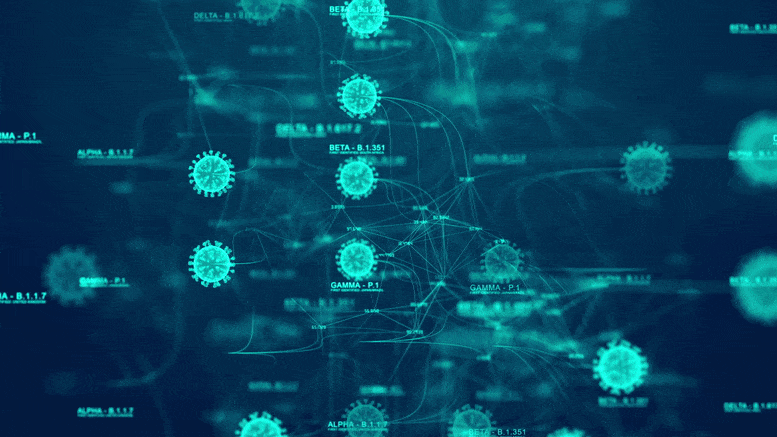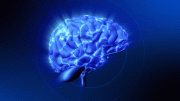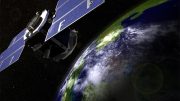
Researchers created a computational method using statistical physics and epidemiology models to analyze genomic surveillance data of SARS-CoV-2 over time and regions worldwide. This method identifies the impact of different mutations on the virus’s transmission, explaining its evolutionary history during the pandemic.
UC Riverside-led team develops new computational method that applies techniques from statistical physics mathematical models in epidemiology.
During the COVID-19 pandemic, multiple new and more transmissible variants of the virus have emerged. Understanding how specific mutations affect SARS-CoV-2 transmission could help us to better understand the biology of the virus and to control outbreaks.
This, however, is a challenging task, said John Barton, an assistant professor of physics and astronomy at the University of California, Riverside, who is presenting results from his research titled ‘Inferring the Effects of Mutations on SARS-CoV-2 Transmission From Genomic Surveillance Data’ at the American Physical Society’s March Meeting.
“Existing computational methods to study this problem tend to either be difficult to apply to large amounts of data or rely on very restrictive assumptions,” Barton said. “Experiments can also provide excellent information about how different mutations affect the virus, but they can’t be used to directly study SARS-CoV-2 transmission in humans.”
Barton and his colleagues developed a new computational method to solve this problem by applying techniques from statistical physics mathematical models in epidemiology. Their method allows them to look at genomic surveillance data — SARS-CoV-2 sequences collected from infected individuals — over time and across many regions throughout the world, and to find the effects of different mutations on SARS-CoV-2 transmission that best explain the observed evolutionary history of the virus throughout the pandemic.
“A few novel features of our method are that it can account for the travel of infected individuals between regions, which most other models are unable to do, and that the physics-based methods that we use allow us to write down an exact mathematical expression for the transmission effects of different mutations, rather than relying on numerical simulations to estimate these parameters,” Barton said.
After validating their method on simulations, Barton and his colleagues applied it to more than 1.6 million SARS-CoV-2 sequences from the GISAID database, which were collected from 87 geographical regions.
“Much research has focused on mutations in the Spike protein of SARS-CoV-2, and our analysis supports this emphasis on Spike as a main driver of SARS-CoV-2 transmission,” Barton said. “About half of the most impactful mutations that we find are in Spike, including three of the top four mutations. However, we also find multiple mutations outside of Spike that appear to strongly increase the transmission of the virus. Some of these may make good targets for future experiments to understand how different mutations affect SARS-CoV-2 function.”
Barton explained that their method is also sensitive enough to reveal benefits to SARS-CoV-2 transmission for mutations that were previously assumed to be neutral. His team is also able to detect some increased transmission for major new variants such as Alpha and Delta very rapidly, within a week of their appearance in regional data. The data set the team considered when writing the paper did not include sequences from the Omicron variant because the data was only collected up until August of 2021.
“However, even without observing any Omicron sequences in the data, we would already estimate that Omicron would transmit more readily than Alpha just based on the mutations that it shares with other SARS-CoV-2 variants,” Barton said. “While we have focused specifically on SARS-CoV-2 in our analysis, our method is very general and could be applied to study the transmission of other pathogens, such as influenza.”
This research was led by graduate students Brian Lee and Elizabeth Finney in Barton’s lab, joined by collaborators Muhammad Sohail, Syed Ahmed, and Ahmed Quadeer at the Hong Kong University of Science and Technology; and Matthew McKay at the University of Melbourne, Australia.









Vaccination is required for fightig with any kind of COVID-19 virus.Besides to these meta scientific- economic balance is a key point in research works to include.Strong biological supports are there that are linked with astrophysics.Any biological process undergoing a change has positive increase in entropy(S) with a time length ( T) is linked with Boltzman’s Constant K(b) as
(S) × (T) = K(b).
Here entropy and time length are averaged.
Again K(b) can change by a mutiple ranginging from 1 to aprox. 1o.